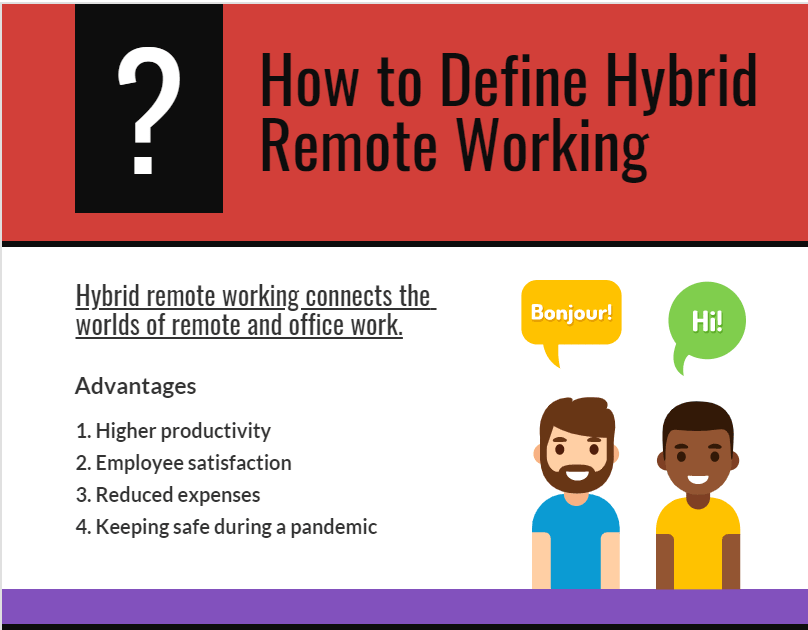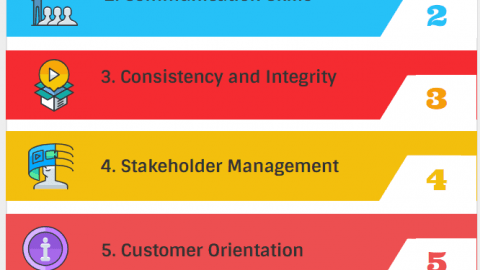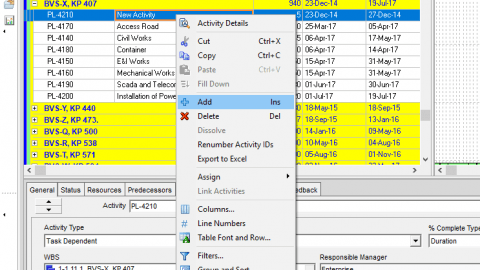How to Define Hybrid Work Model?
The hybrid work model connects the worlds of remote and office work. In the hybrid work model, personnel have the freedom to work however and wherever they want. To communicate with their coworkers, they’ll utilize a combination of face-to-face meetings, video conferencing, and messaging applications. Hybrid work appears to be a more productive and cost-effective option where both employers and employees are satisfied. When it comes to working conditions, many companies are still pushing the edge. However, companies are beginning to realize that they need to be more concerned about the connection between employee satisfaction and improved work performance.
Table of Contents
How Should Hybrid Work Model Be?
1. Creating areas for one-on-one interactions
There are a few improvements that can be made to the office arrangement that will help remote employees the most. Co-located personnel can easily communicate with their remote counterparts through designated huddle rooms or call booths. These rooms are soundproof and make for effective one-on-one meetings without distractions.
2. Purchasing video conferencing equipment
Video conferencing is probably the most used method of communication in remote working as well as the hybrid work model. Remote employees should be encouraged to use video conferencing. Companies also must invest in simple and effective video conferencing solutions that in-office personnel and remote employees may use to communicate. Video conferencing makes engagement simpler among employees and makes meetings more effective.
3. Using room reservation systems
A room booking system like a WordPress appointment booking plugin should also be available in meeting rooms where the video conferencing will take place. The advantage of adopting a room booking system is that co-located workers may start meetings quickly and simply. It allows remote workers to avoid wasting time while waiting for meetings to be set up.
4. Project management
It’s critical that your employees have a project management system where they can clearly see their assignments, no matter where they’re working, to ensure that your projects keep moving forward. Priorities, deliverables, and the work that needs to be completed to satisfy project goals should be immediately visible to team members to avoid loss of time or confusion.
Consider incorporating project management tools such as Microsoft Teams Planner, Basecamp, Teamwork, Monday, or Trello into your working system to make this easier. This will ensure that tasks are completed seamlessly whether your staff are working from home or away from the office.
5. Physical hardware
Employees that work outside of your real office area should not use their own computer. This can be a major security risk for your company, and it also means they won’t have access to all of the tools they need to do their job effectively. Rather, purchase hardware for each employee so that your IT department has complete control over the technologies they deploy.
What are the Advantages of the Hybrid Work Model?
1. Higher productivity
Some managers have previously viewed hybrid work with skepticism, assuming that if employees could choose when and how long they worked, they would simply choose to do less work. This is proven to be untrue. In fact, it appears that the opposite is true. According to a Microsoft study done on the impact of the pandemic on company performance across Europe, 82 percent of CEOs claimed their businesses were at least as productive as they were before the outbreak.
This is reasonable. Flexible workers can make greater use of their time in a hybrid workplace. They have the option of avoiding commuting during peak hours. They can concentrate on their work without being distracted by the usual office noises and other distractions. They can work whenever it is most productive for them, whether it is in the middle of the night or first thing in the morning. Employees perform better when they are happier, more rested, and less worried.
2. Employee satisfaction
Employee satisfaction rises significantly when employees have the freedom to work when and where they want. Employees who worked remotely reported feeling happier than their coworkers who stayed in the office, according to a 2020 SurveyMonkey survey. There are a variety of reasons for this, ranging from the psychological advantages of having complete control over their schedules to just having a dog at their side while working. This improved mood is attributed to the ability to dress more casually, cook more, and spend more time with loved ones.
Working from home, though, might be alienating or distracting for some people. A hybrid workplace addresses many of the drawbacks of pure remote work by providing a professional environment outside of the home for employees to interact and socialize.
3. Hybrid Work Model Reduced Expenses
Rows upon rows of designated desks are unnecessary in a hybrid office. Instead, a successful hybrid office combines a variety of flexible spaces designed to support personnel across various tasks, such as standing desks in which people can log in with their own laptops, relaxing lounges for catching up on emails, soundproofed booths for phone meetings, and coffee areas for informal team chats.
Employers may plan around new occupancy levels to save money on rent, office supplies, and other business expenses once they know how many employees will be in the workplace at any one moment.
4. Keeping safe during a pandemic
Even when vaccinations take effect and the pandemic fades away, health experts warn that societal barriers will stay in place for some time. Until then, the way we work and commute in our cities will continue to reflect the virus’s level of danger. A hybrid workforce keeps employees safe during a pandemic by limiting the number of individuals in the office at any given moment, allowing for enough personal space, and making it easy to maintain distance. If they or their family are in danger, flexible workers can commute during off-peak hours or work from home.
Conclusion
We shared what the hybrid work model is and what are its advantages in detail. By switching to the hybrid work model, you’ll be able to generate harmony between all of your team and employees, no matter where they’re located. Employee satisfaction will improve and consequently, work performance will improve as well.

Margaret Conte has been working as a consultany for over 15 years. In this time, she has worked in a variety of project management methodologies (waterfall/scrum/agile) and has been a strategic Project Manager, Coordinator, Facilitator and Scrum Master. She is the co-founder of Development Fast Academy










